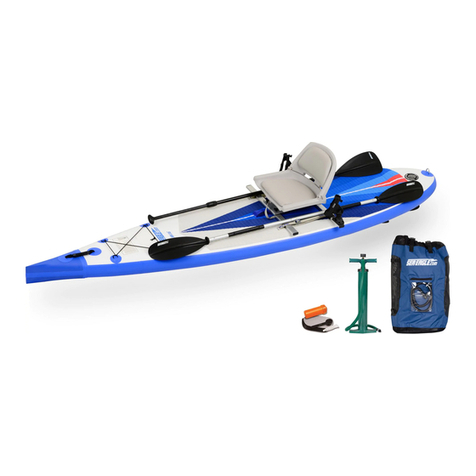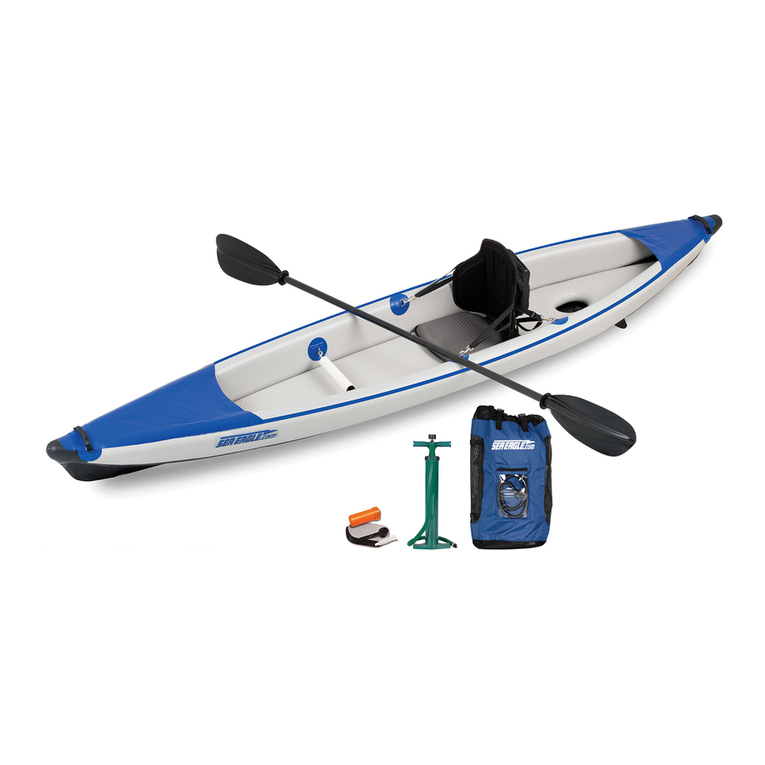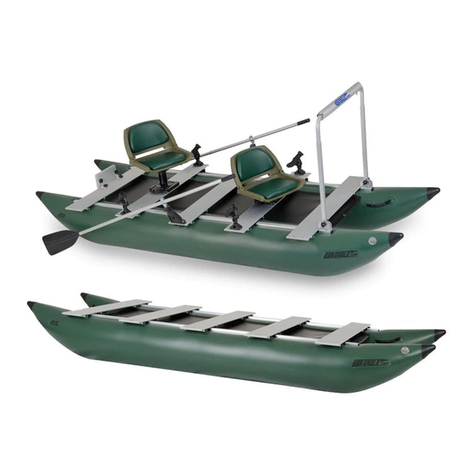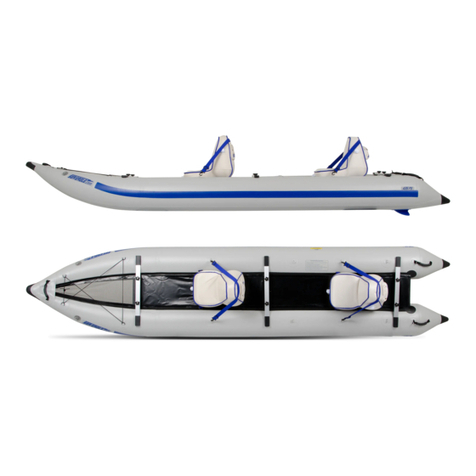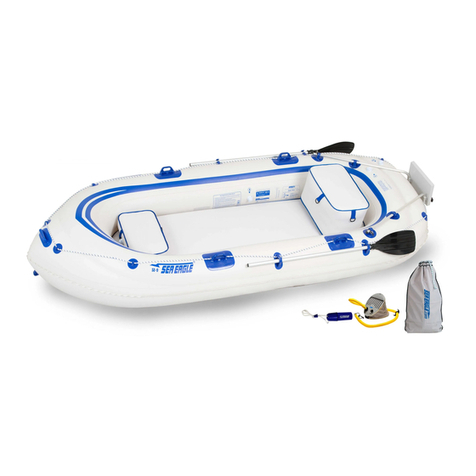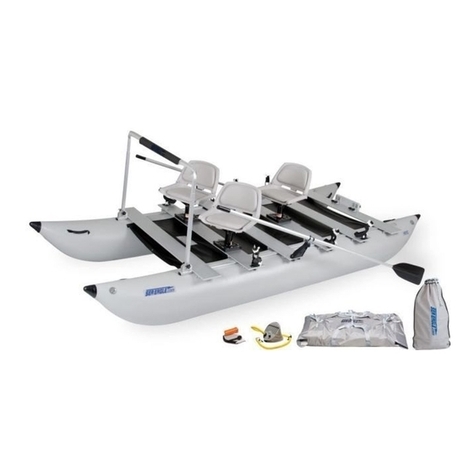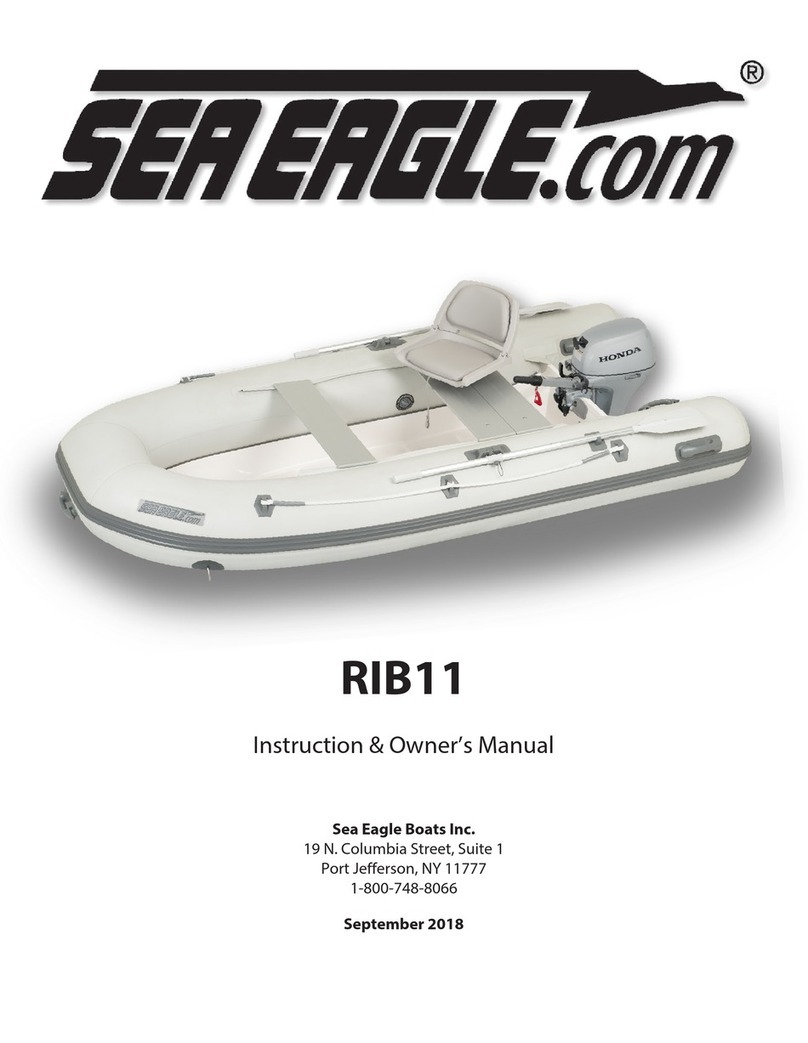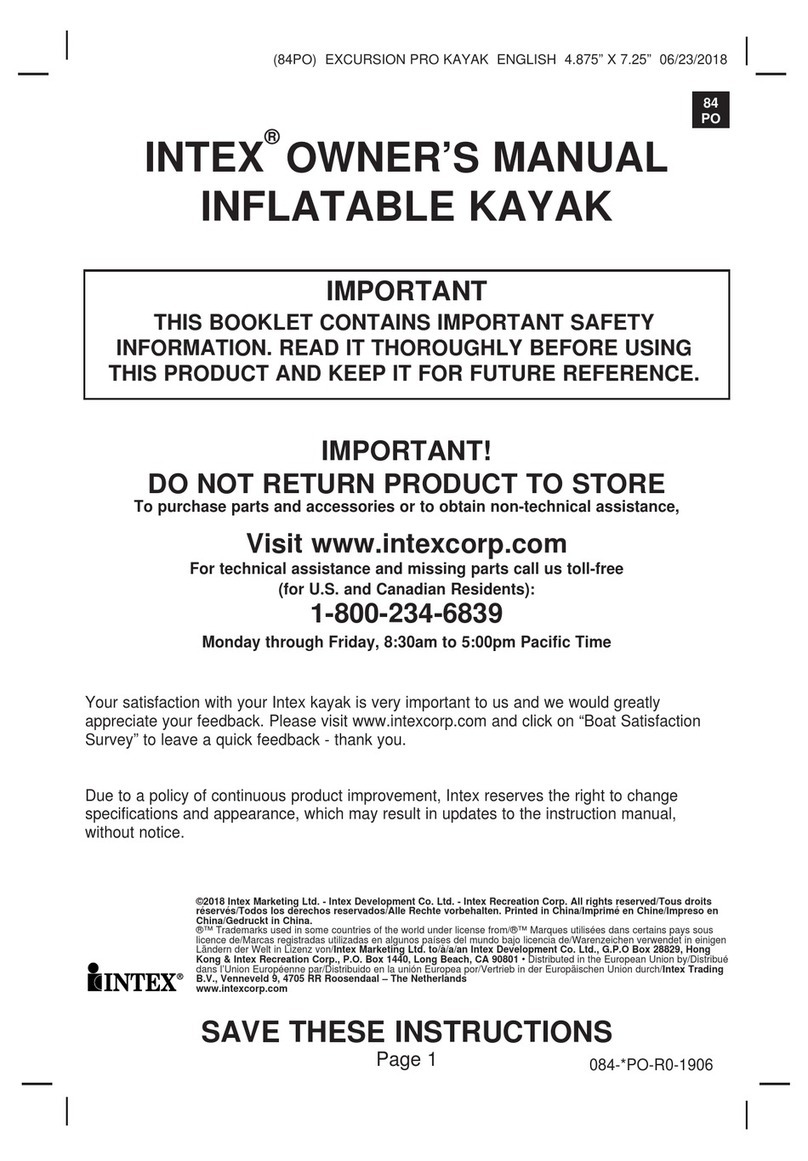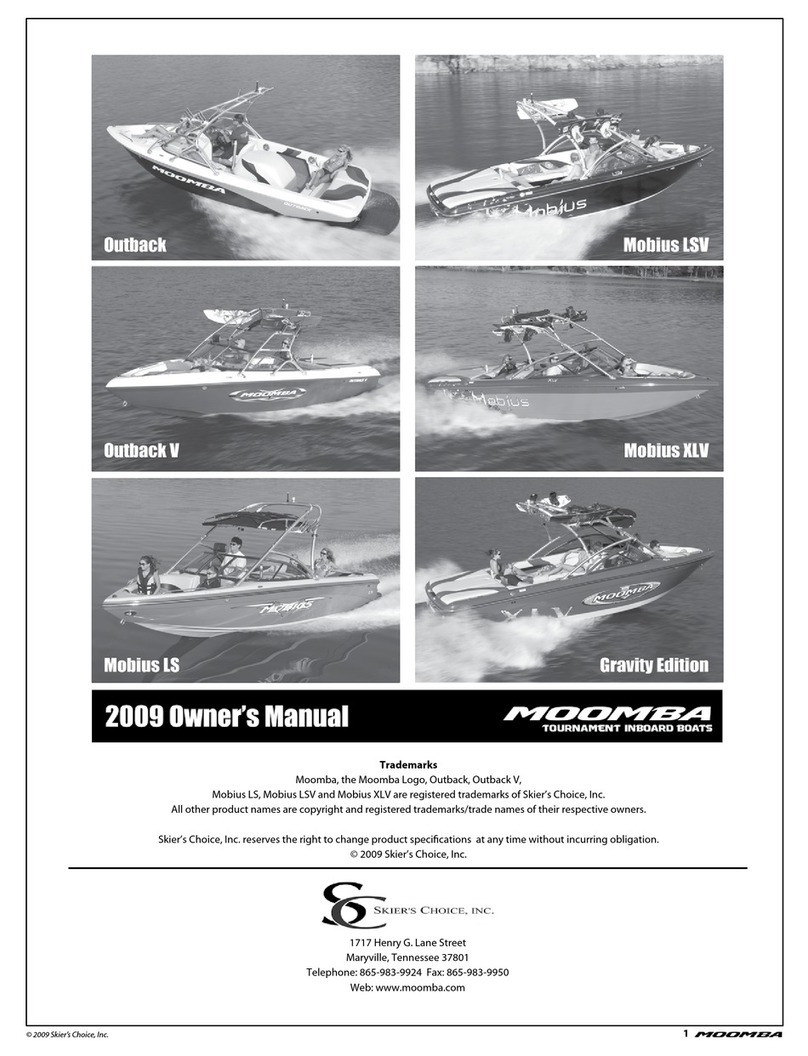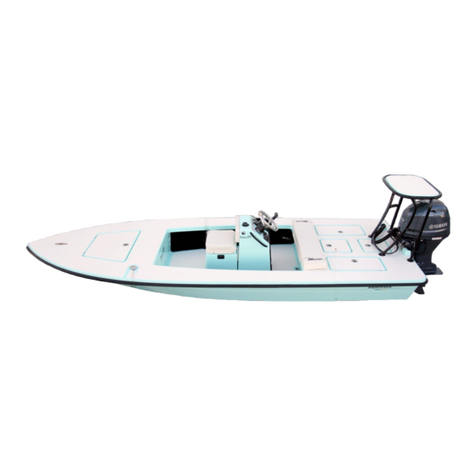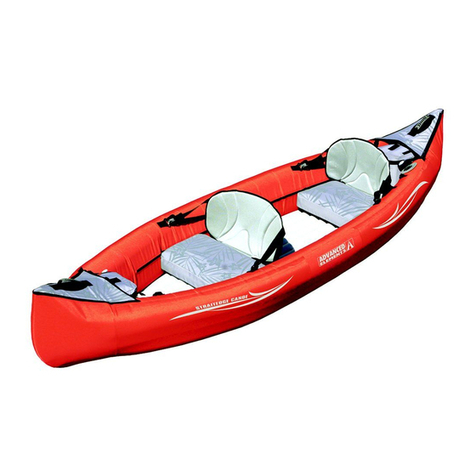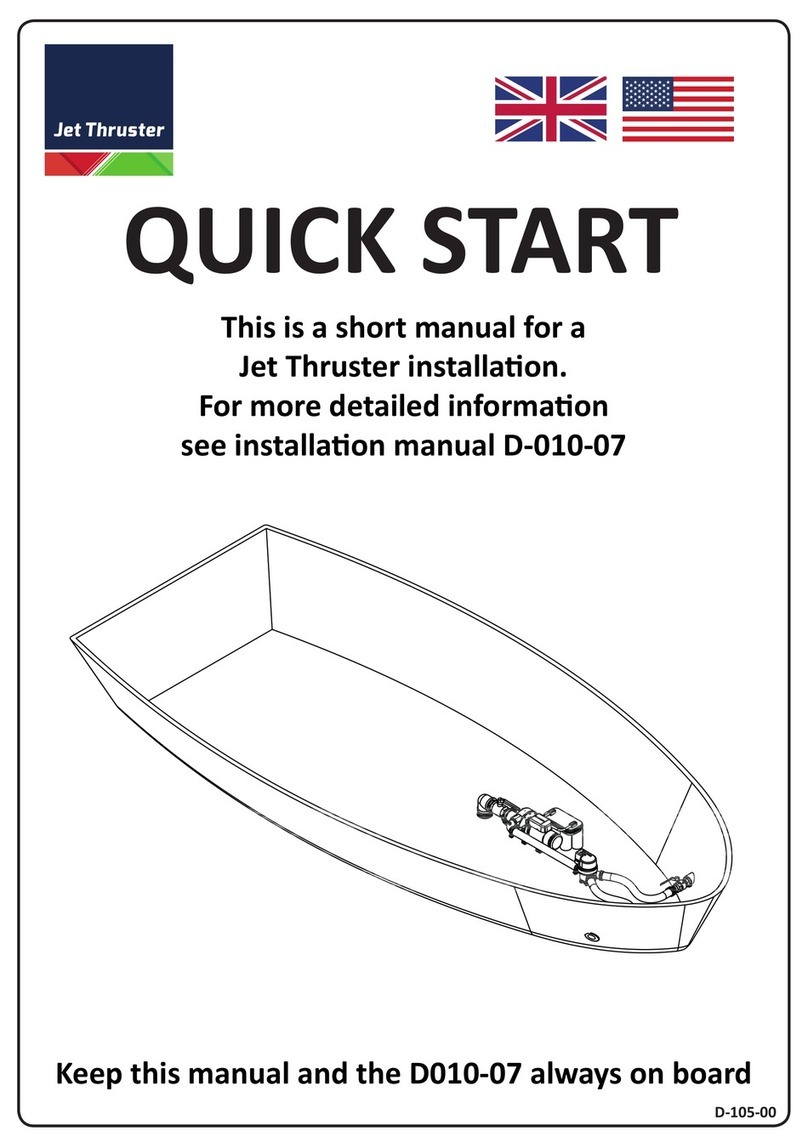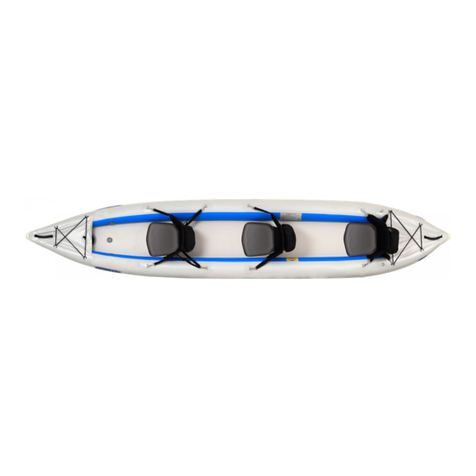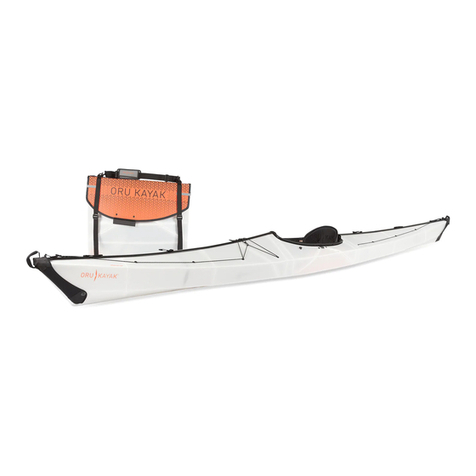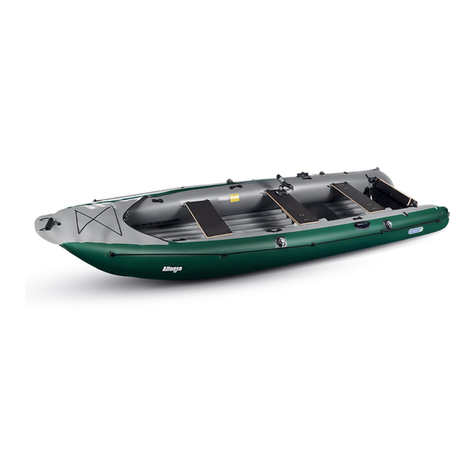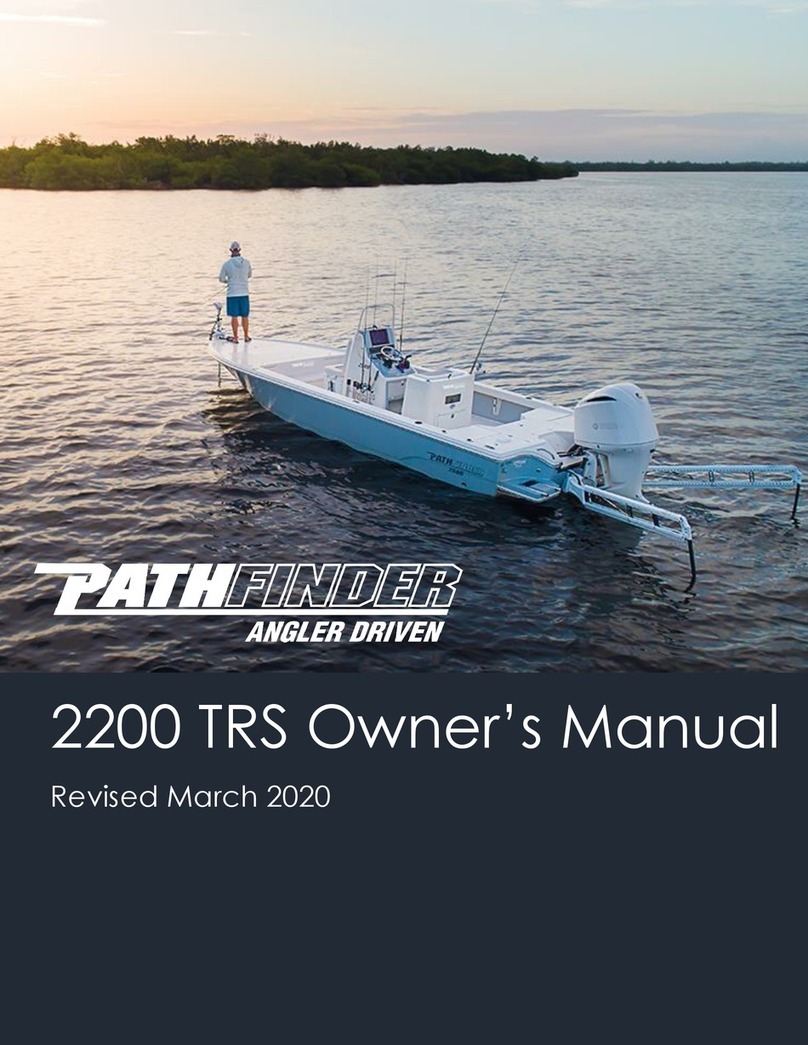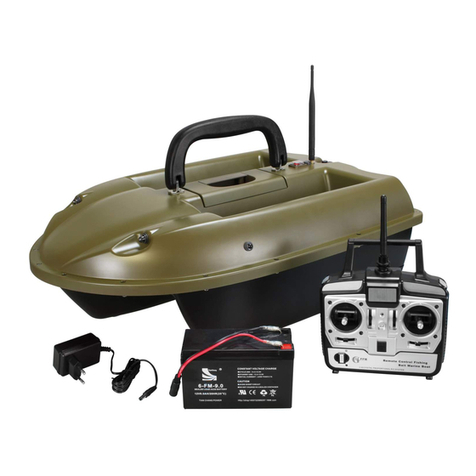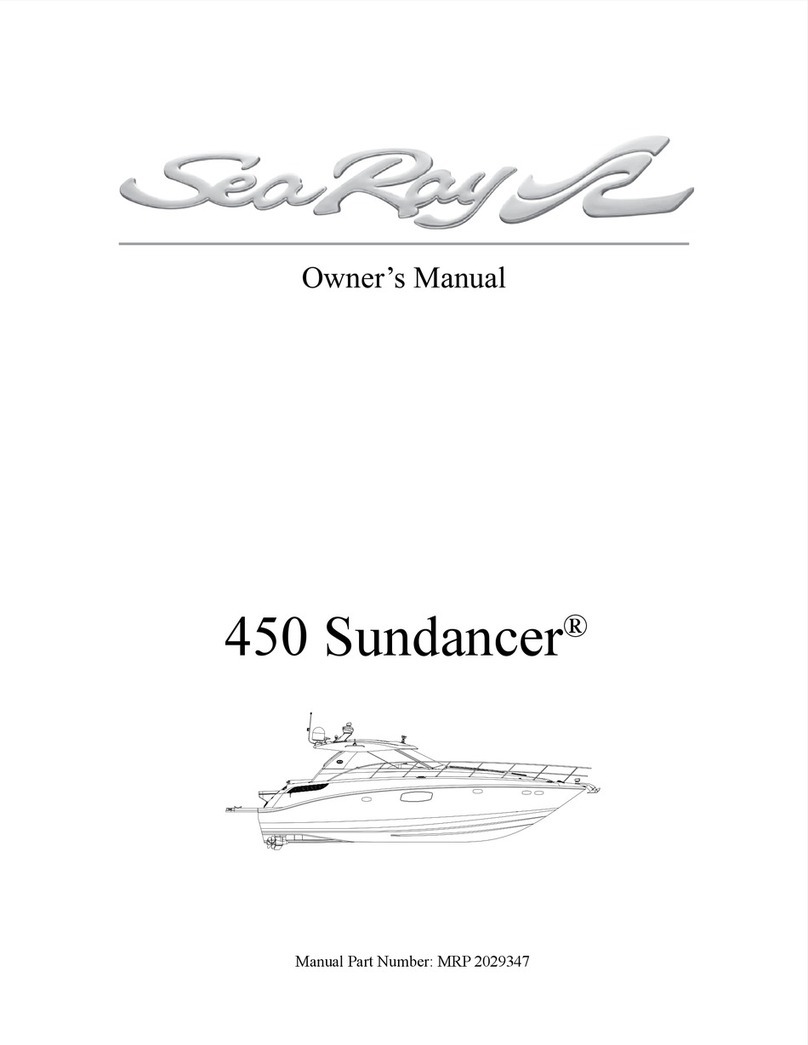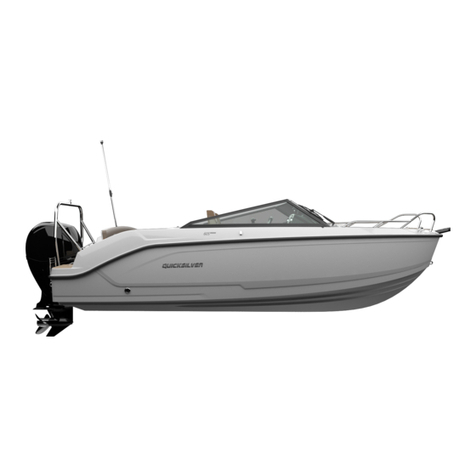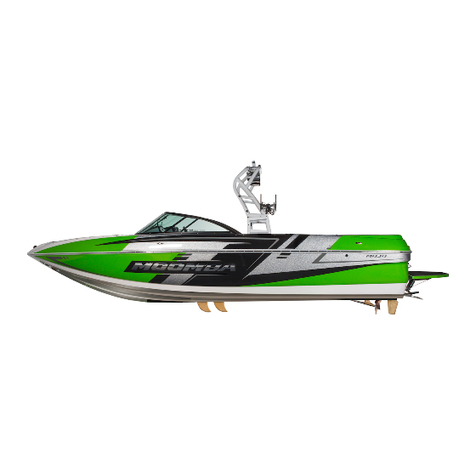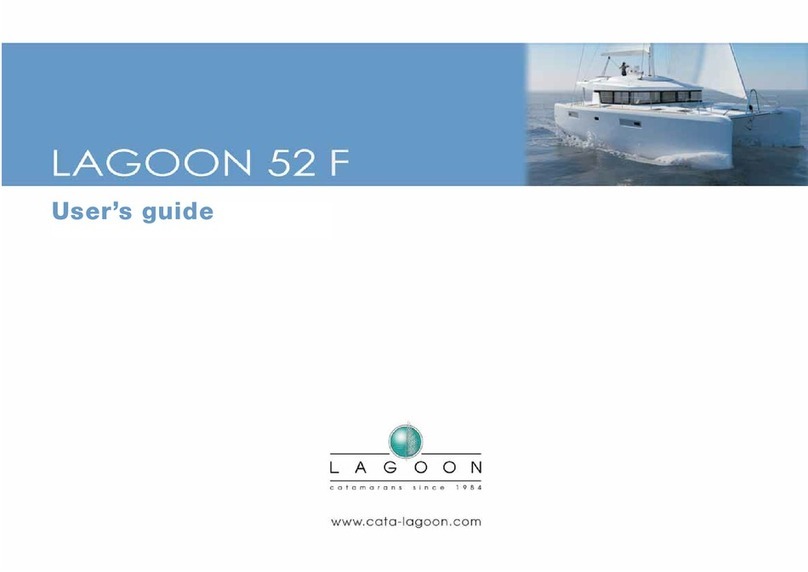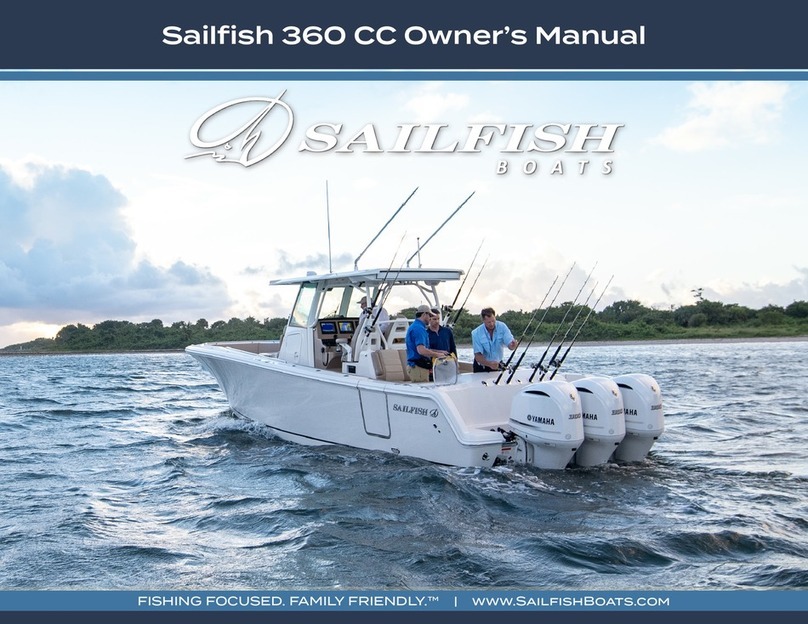
9
Carry Bag
Use the straps to secure
the side flaps first.
Repeat with the front
and rear flaps. The
canoe can be folded
using different folding
points depending on the
dimensions of the
storage area.
Fold the two long sides
over and secure with
attached straps. Then
fold the remaining two
sides and secure.
Travel Canoe | CLEANING & PROTECTING
Dry after each use to avoid mold. While washing or
rinsing: close the valves and twist the caps on so
water cannot not enter the chambers. Sea Eagles can
be cleaned very effectively with general purpose cleaning
products and a scrub brush.
Water collects under the sides of the floor of the Travel
Canoe. To drain, elevate the front so water runs down and
collects in stern. Turn boat over and lift the back so water
spills out the back. Caution! The canoe will want to flip
uprigt. Towel dry the lowest areas.
Protection from the Sun and Heat
Avoid leaving the canoe in direct sunlight when ashore.
Temperatures on a beach, dock, davit, etc., can get very
high which could affect the vinyl or glue. Excessive
exposure to sun and heat can cause your Sea Eagle to
become sticky or cause the glue to fail.
Travel Canoe | STORAGE
If you’re planning to leave your Sea Eagle outside, keep it
raised off the ground and covered so it is not exposed to
sunlight, rain, leaves, berries, bird droppings, etc.
Sea Eagles that are left on the water or turned upright will
need to be emptied from time to time. Open the floor drains
rather than trying to lift a boat full of water.
If your Sea Eagle has lost pressure, it does not necessarily
mean it is leaking. If it is inflated during the heat of the day
and the temperature drops during the night it will be softer
in the morning. If launching in very cold water, the air inside
may contract and cause a loss of pressure. Add more air
to restore to full pressure. If temperature is not a factor and
your boat is losing air pressure, it’s time to look for a leak.
Step #1. LOOK
Visually inspect the boat close up and if necessary, flip it
over and closely check the outside. Any large leaks when
your boat looses a considerable amount of air should be
clearly visible.
Step #3. TIGHTEN
Check the tightness of the one-way recessed valves as
well and if necessary, tighten them with the valve wrench
included in the repair kit canister.
Travel Canoe | TROUBLE SHOOTING
Step #2. LISTEN
If you have a rough idea of where your leak is but can’t see
it, you may want to try listening for it as you may be able to
hear the air escaping and pinpoint the leak.
Step #4. SOAPY WATER TEST
You’ll need a bucket and liquid dish washing soap. Fill the
bucket with clear water, and add a good squirt of soap
(couple of tablespoons) to the water. Inflate the leaking
chamber to full pressure. Spread lots of soapy water on
the leaking chamber with a hand towel or large sponge.
Don’t assume the leak is coming from the valve or seams.
The leak may produce bubbles, make hissing or sputtering
noises, or spray water. Spray bottles are not effective at
locating many leaks.
Storage Tips: “The best way to store a Sea Eagle is folded
up in it’s bag”. - Cecil Hoge, Jr., Sea Eagle President
• Check for water in the chambers. Water will leak out of
open valves when it is rolled up.
• Water left inside can cause a lot of mold. Dry thoroughly
to prevent mold.
• Rodent-proof the storage area. Mice, squirrels and other
small rodents can do a lot of damage.
• Avoid excess heat. Do not store in direct sunlight, in an
attic or a metal shed.
• In temperatures below freezing, do not drop, strike or
unroll until it is brought to room temperature.
• It can be stored inflated. If hung, support it along its
length.
• After storage, inspect for loose items, damage and leaks.














